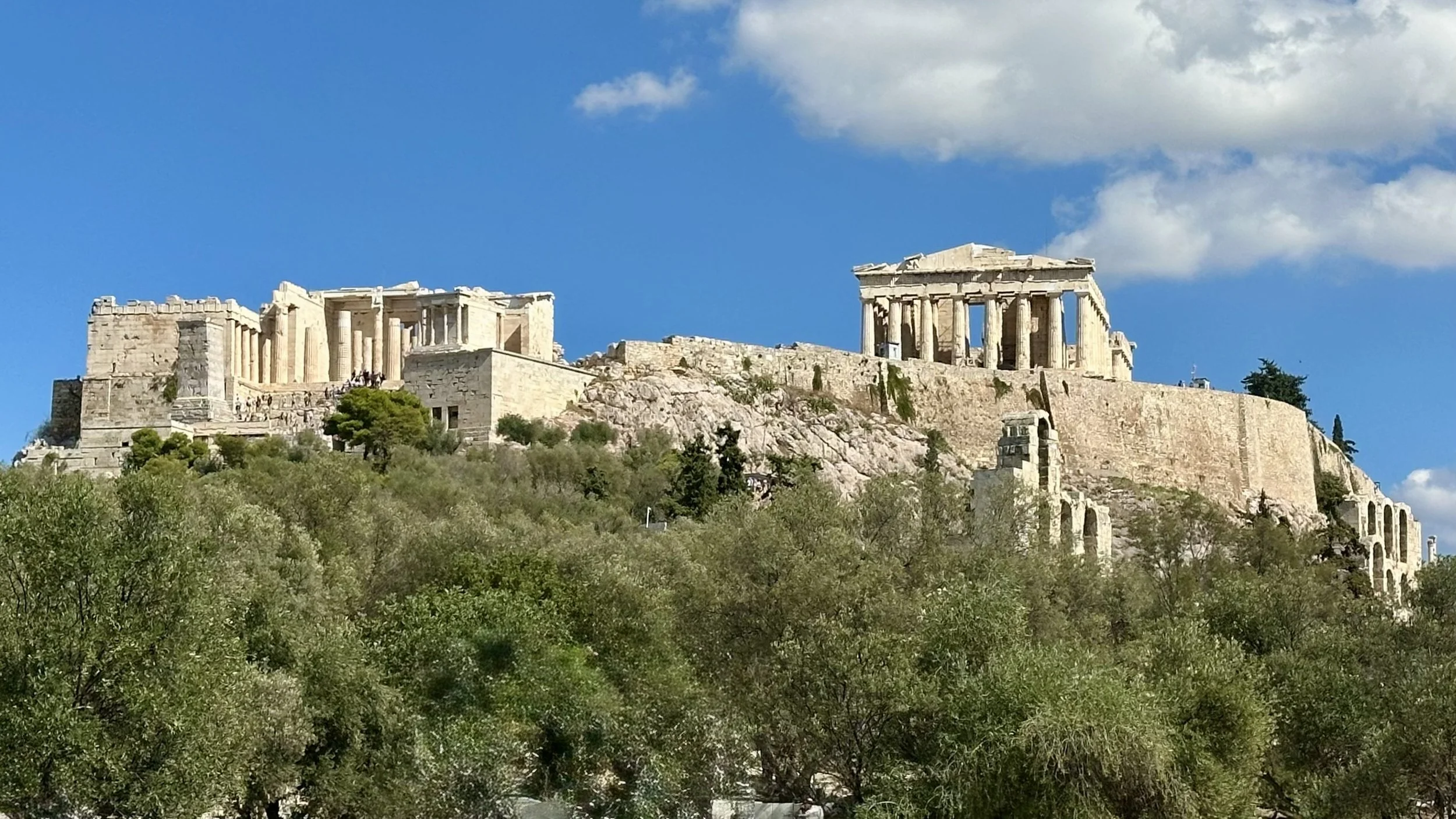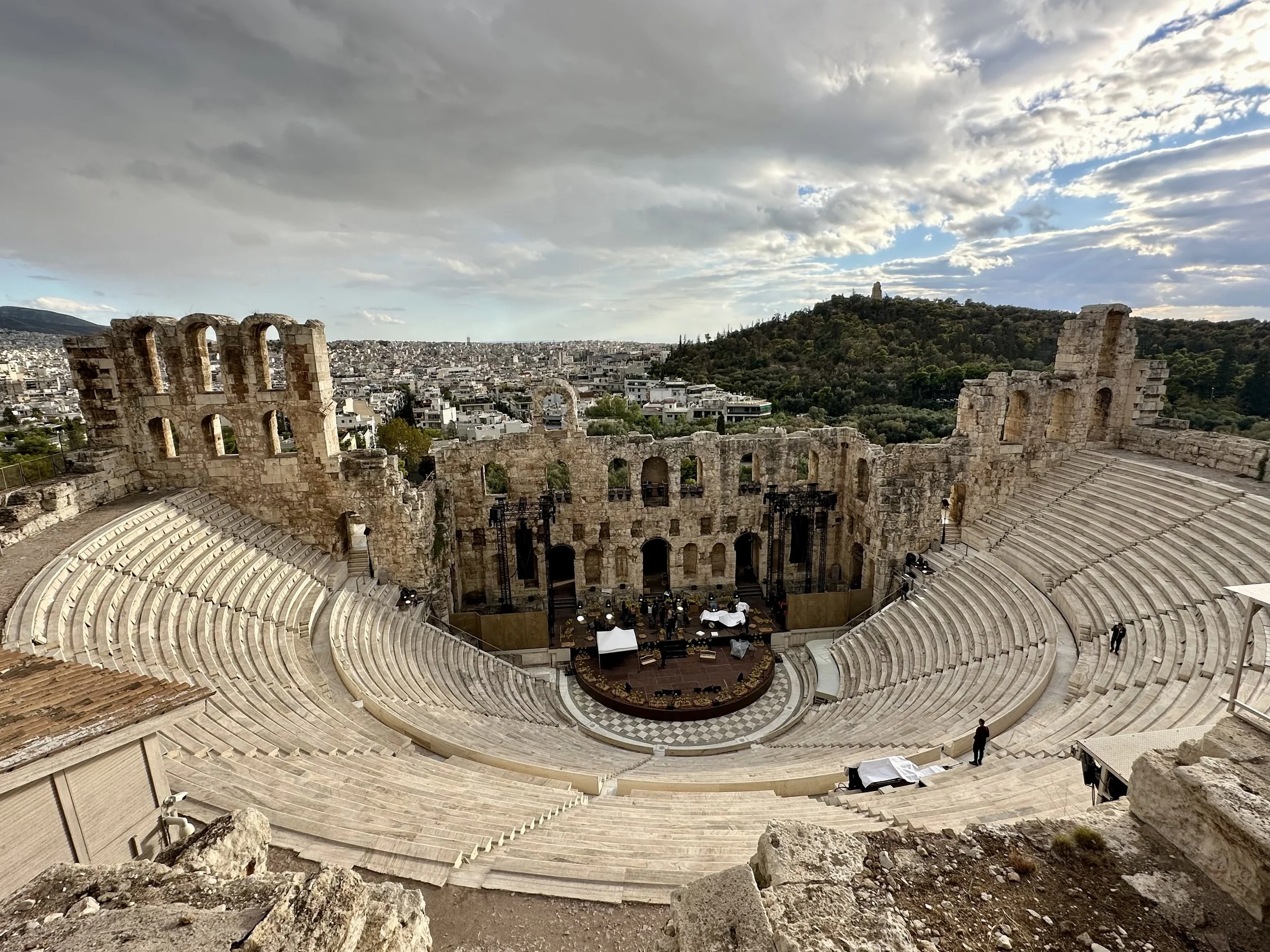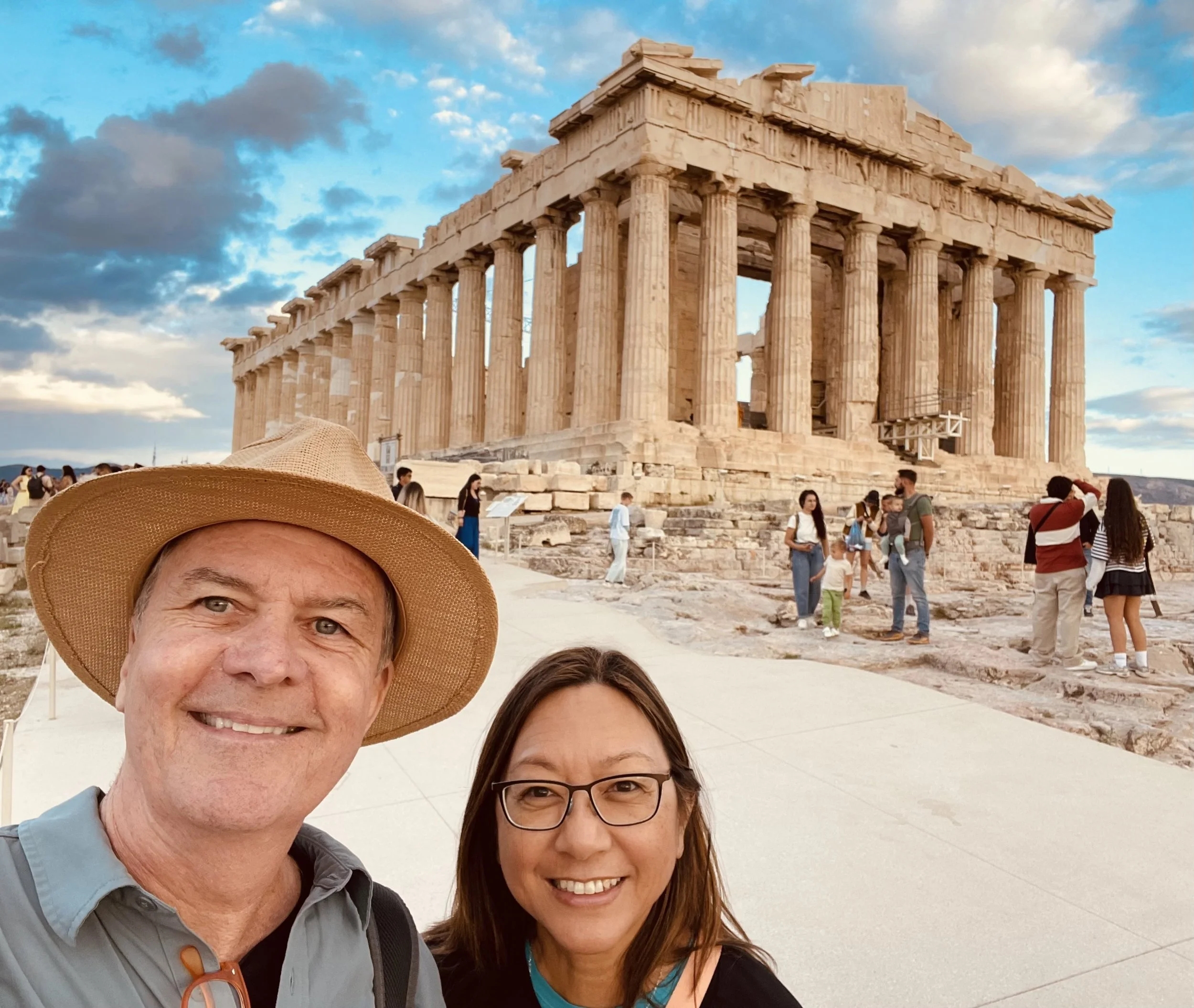Acropolis of Athens
Steve and I had recently visited Mycenae, which was a great, powerful city a thousand years before the Athenians had their golden age. But Mycenae was just a hill compared to the Acropolis of Athens, an immense rock topped with majestic temples. It was hard to believe that this iconic city, the birthplace of democracy, was built 2,500 years ago.
We met up with our tour guide, Giannis, at the Metro station near the Acropolis Museum. Giannis was a native Athenian. He had studied history in college and was now doing what he loved - showing visitors his fair city. The stories of Greek mythology that we had read in high school Latin class or Percy Jackson novels, were the bedtime stories that Giannis grew up with.
After climbing the 999 steps of Palamidi, walking up the Acropolis slopes was easy! We paused briefly at the Theater of Dionysos (the god of wine, revelry, and theater) and the Sanctuary of Asclepius (the god of medicine and healing). We stopped at Pnyx, where ancient Athenians would assemble and make speeches or vote. Democracy was created here! There were sweeping views of Athens. It was cloudy, but we could see the waters of the Saronic Gulf and the mountains of the Peloponnese, which had been our home for the past month. Pnyx was the preferred spot for one of the cats who lives at the Acropolis. It was too sleepy to bother acknowledging us.
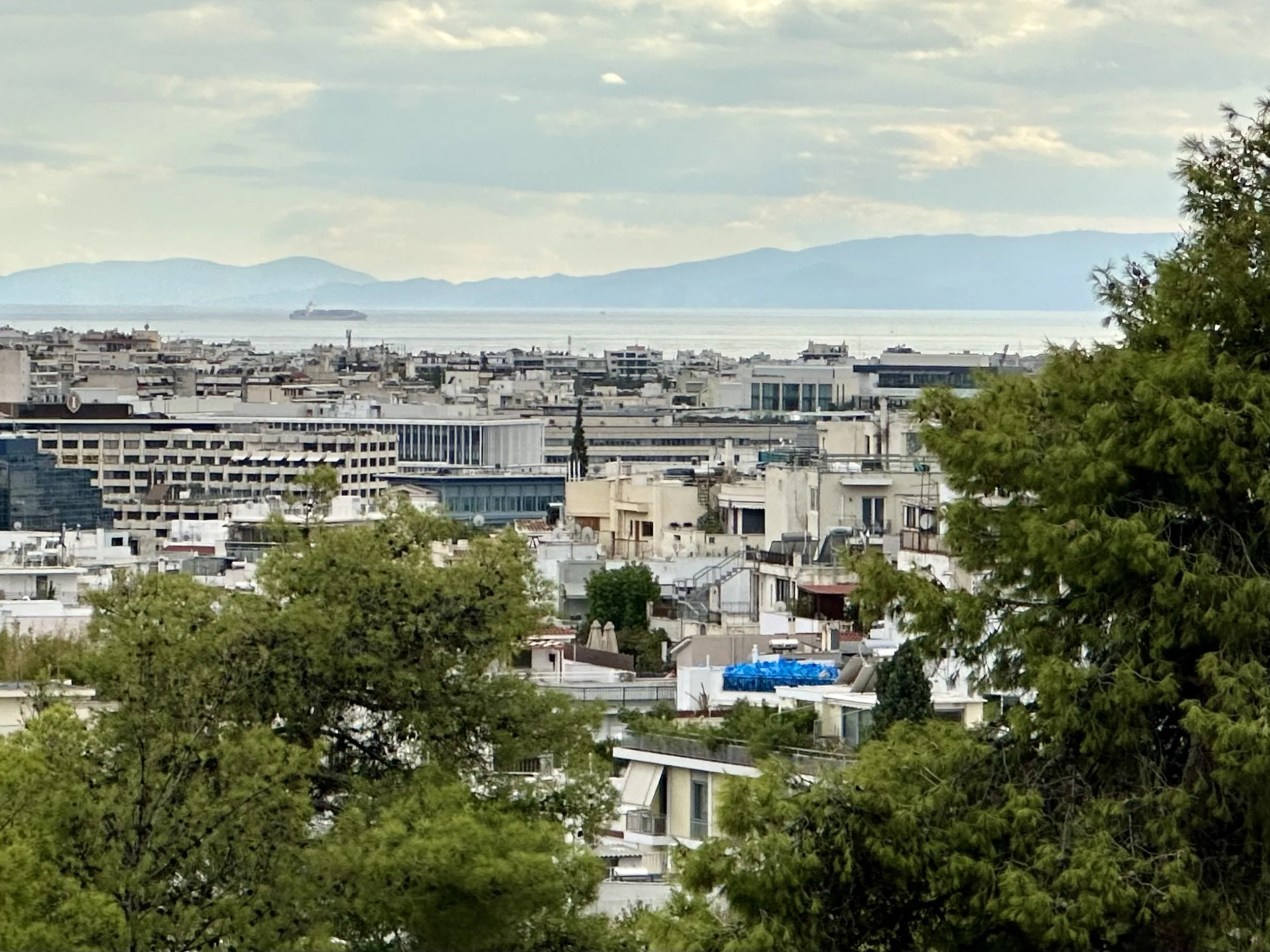
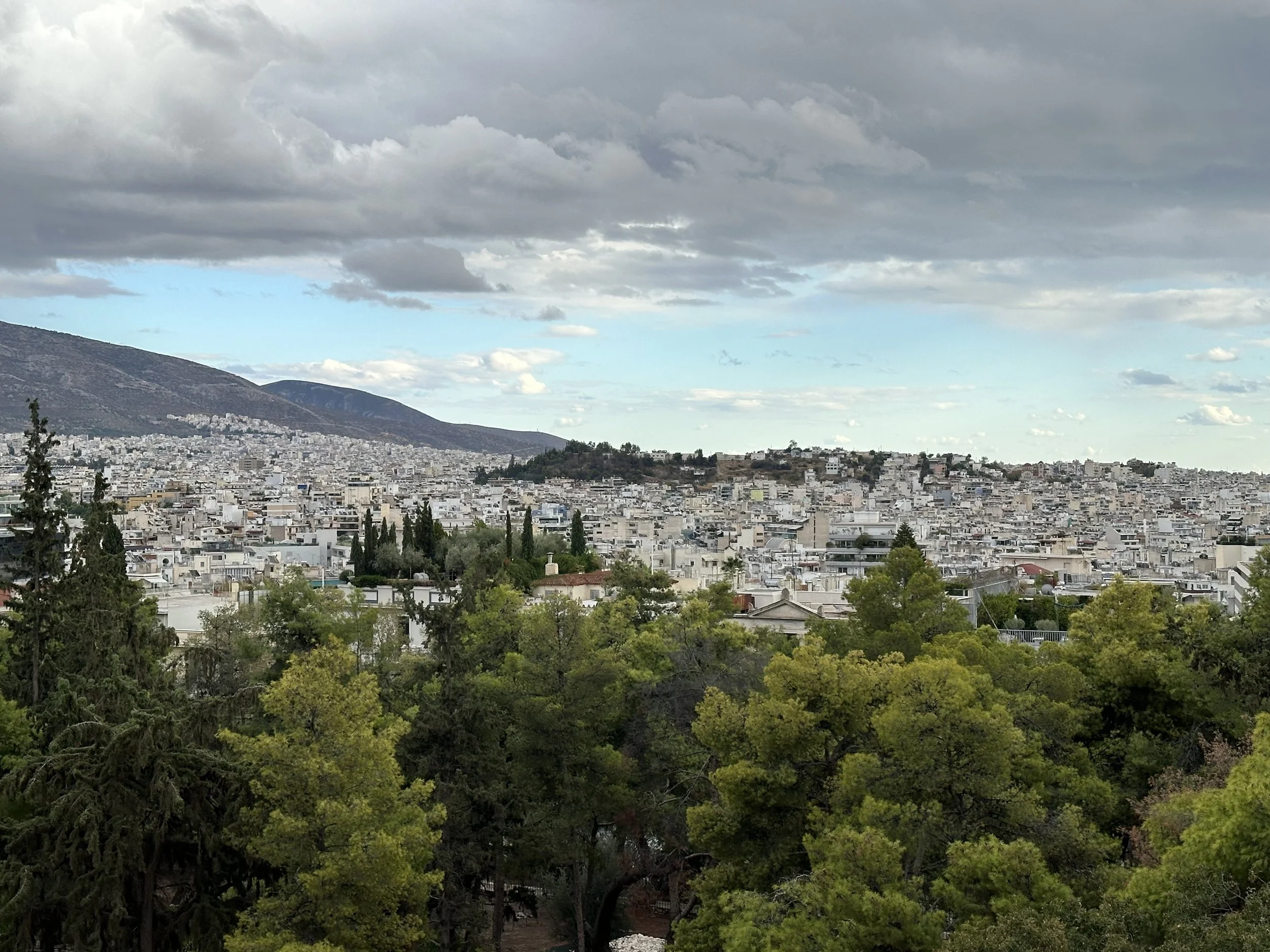
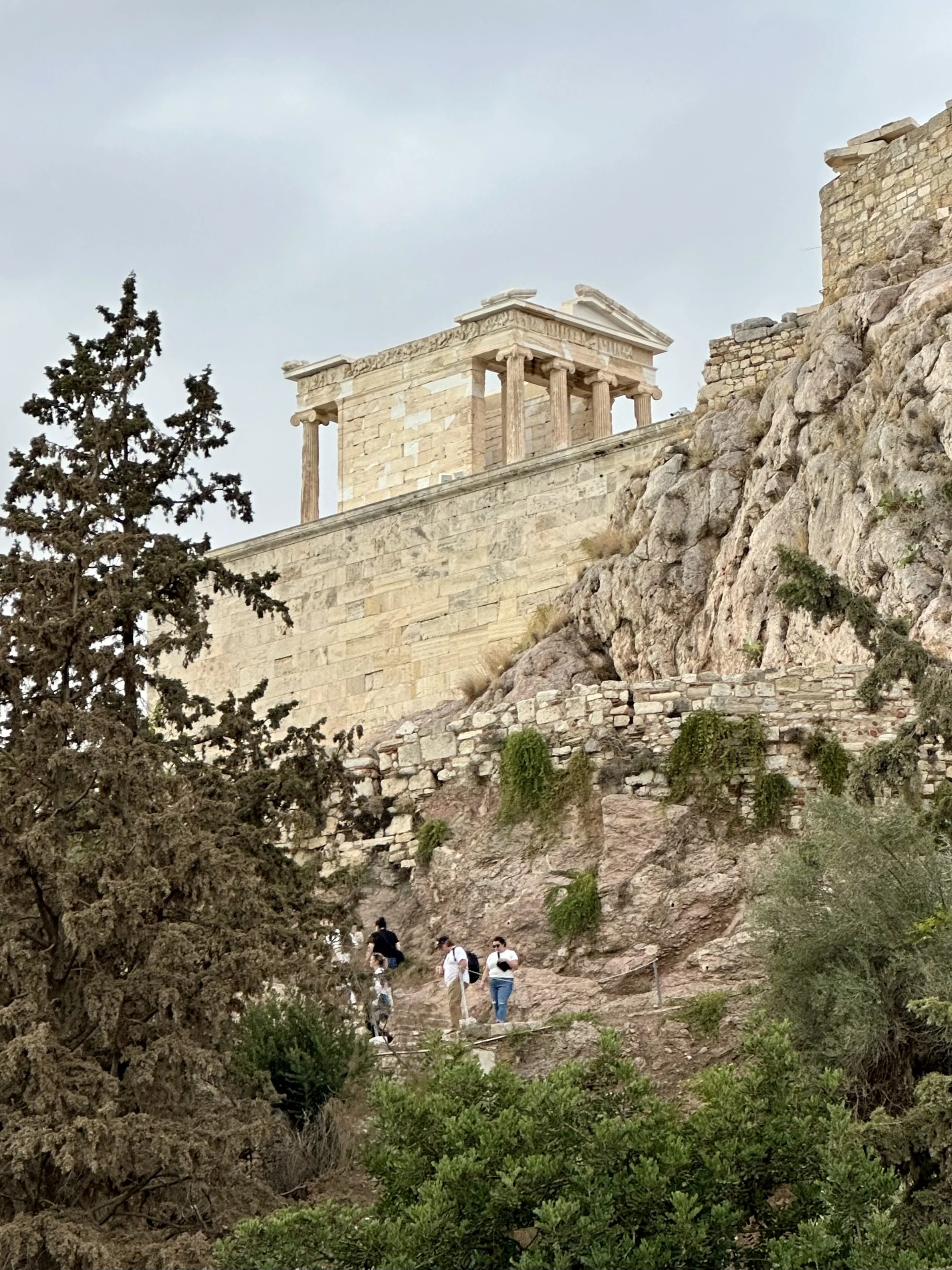
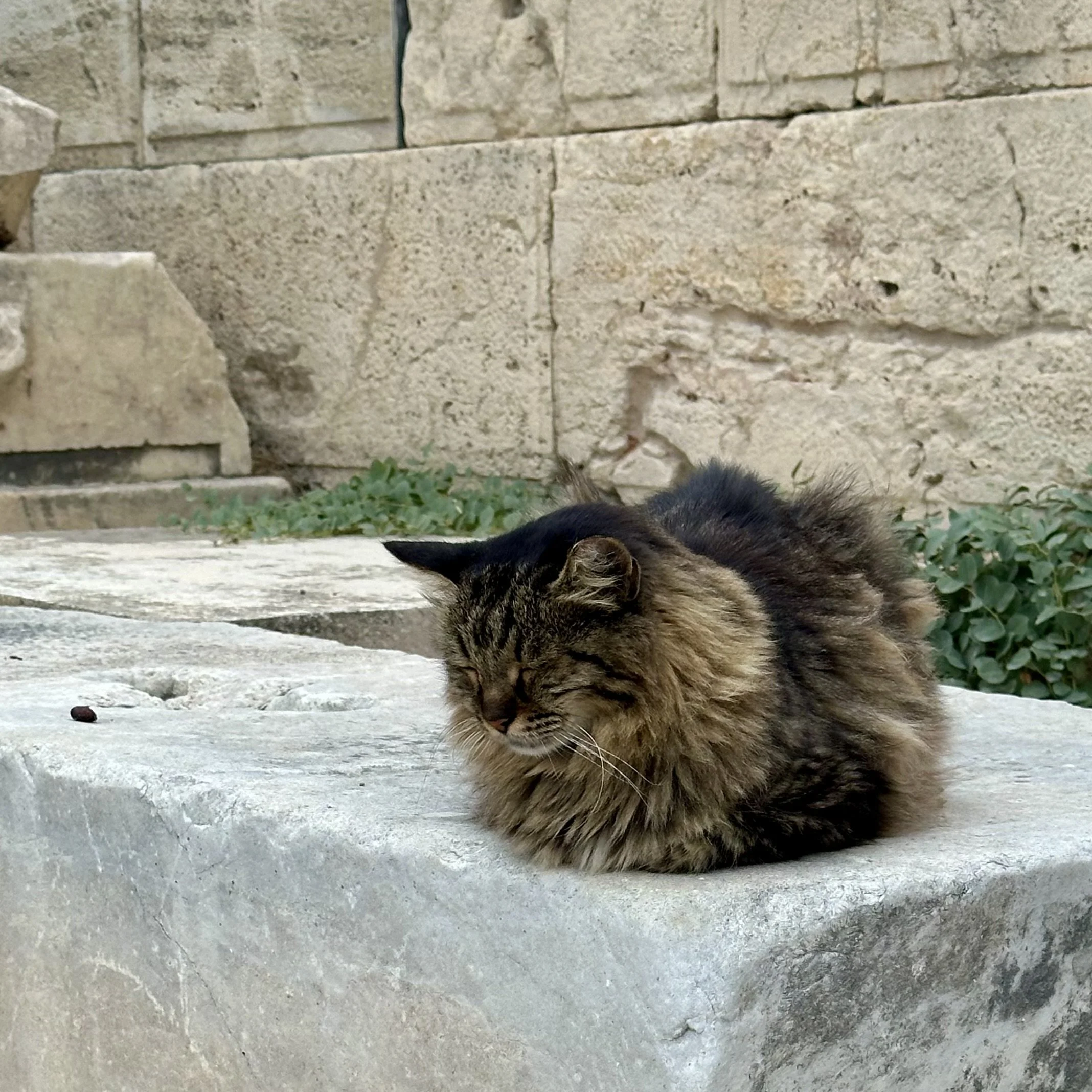
Next along the path was the Odeon of Herodes Atticus. Giannis explained that Herodes was a wealthy city official in Roman Athens who was accused of murdering his very pregnant wife. (He was exonerated.) Herodes built the Odeon in his wife’s memory in 161 CE, and the theater is still used for live performances today. We could see and hear the preparations for concert that evening. A sprinkle of rain threatened, but lasted just two or three minutes.
Now we could see the main entrance to the Acropolis. Marble steps led up to the Temple of Athena Nike, the Propylaea, and the Monument of Agrippa.
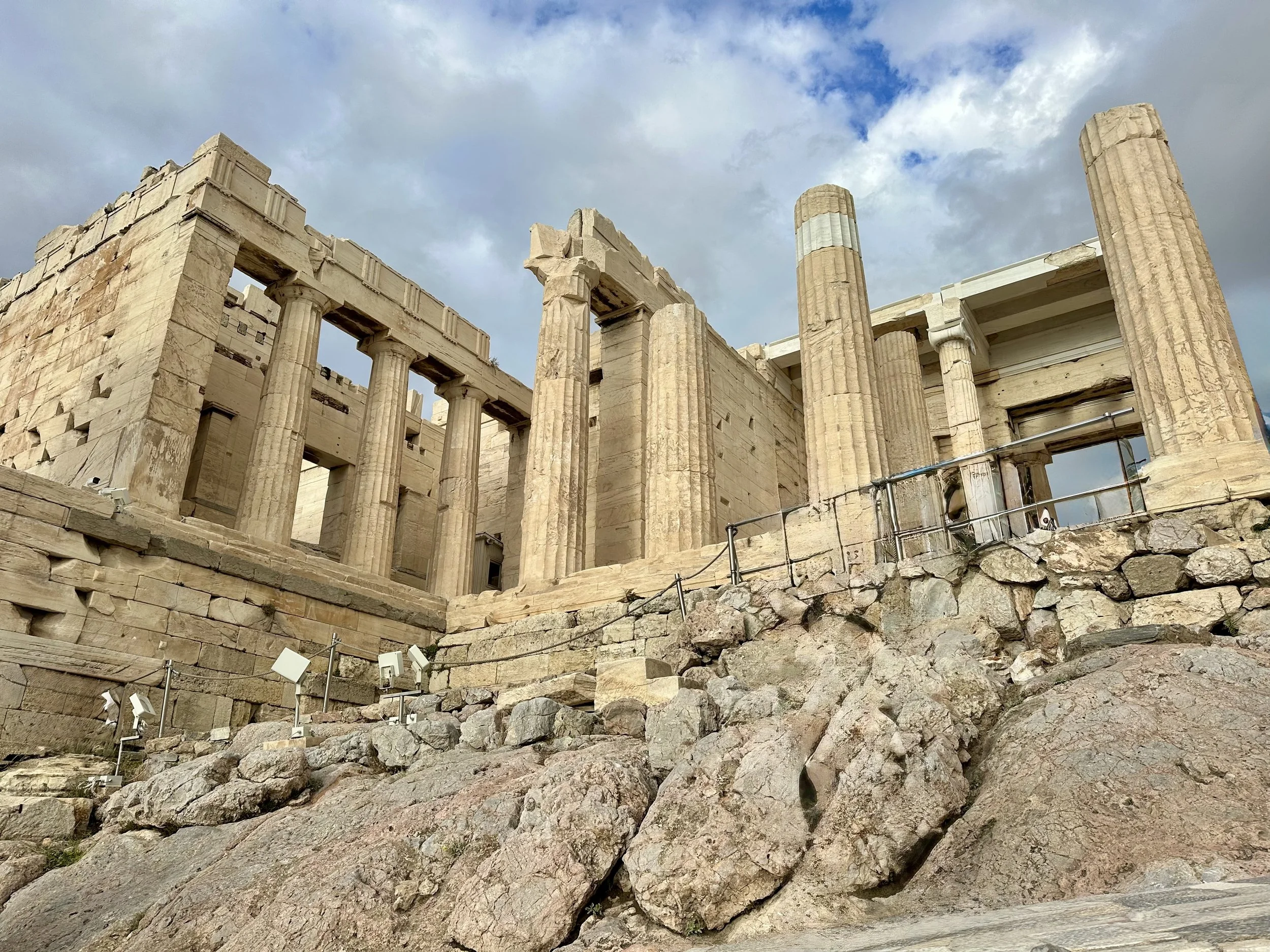
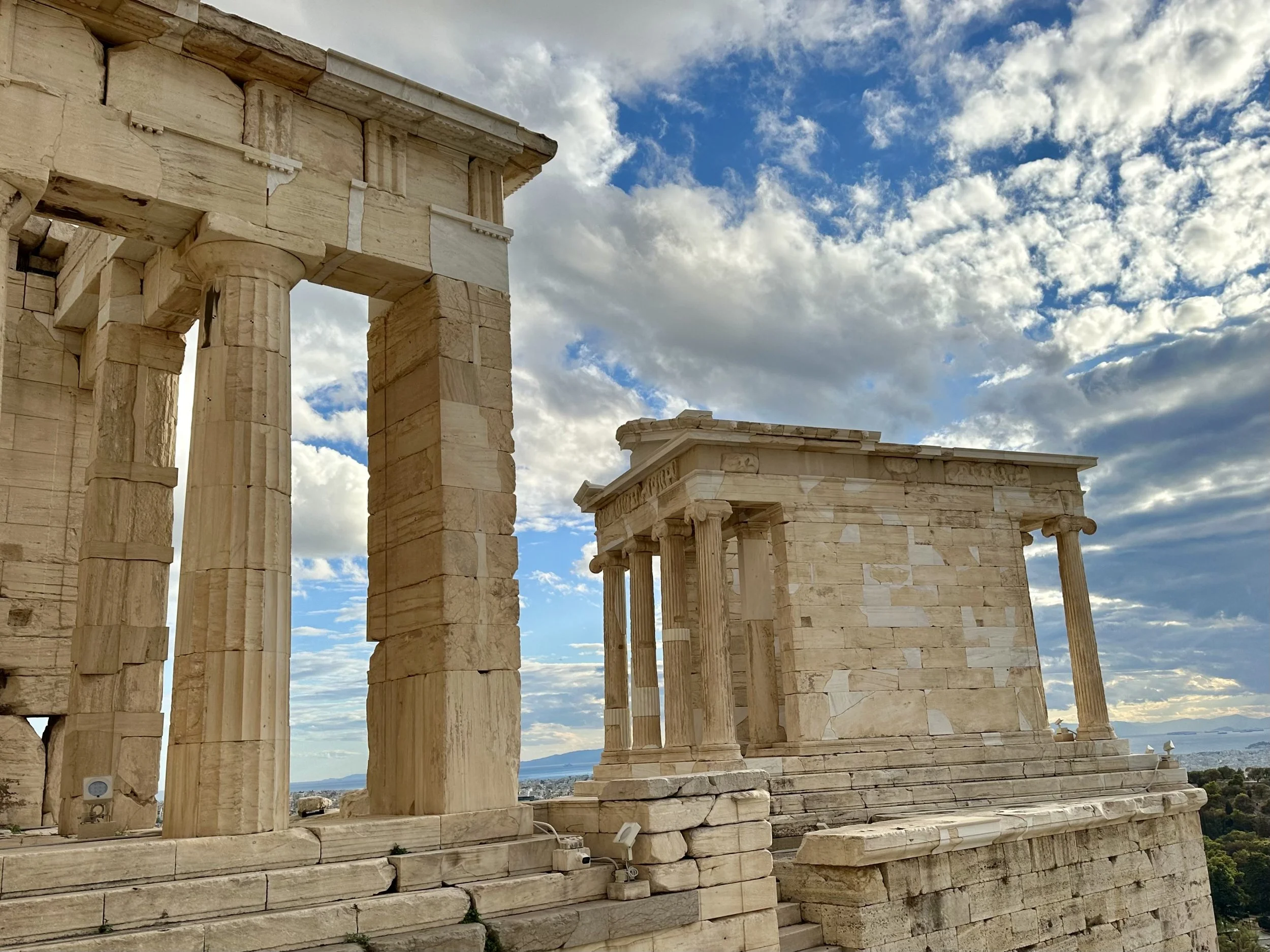
We passed through the Propylaea and found ourselves on the expansive, flat top of the Acropolis. Ahead was the Erechtheion, with its famous Porch of the Caryatids. It was an oddly irregular building, perhaps because it had housed shrines to both Poseidon-Erechtheus and Athena. Giannis told us the story: Poseidon and Athena competed to be patron of the new city. Poseidon struck the ground with his mighty trident, and a spring appeared - but the water was salty. Athena planted an olive tree, which could provide fruit, oil, and wood. We all know who won that contest.
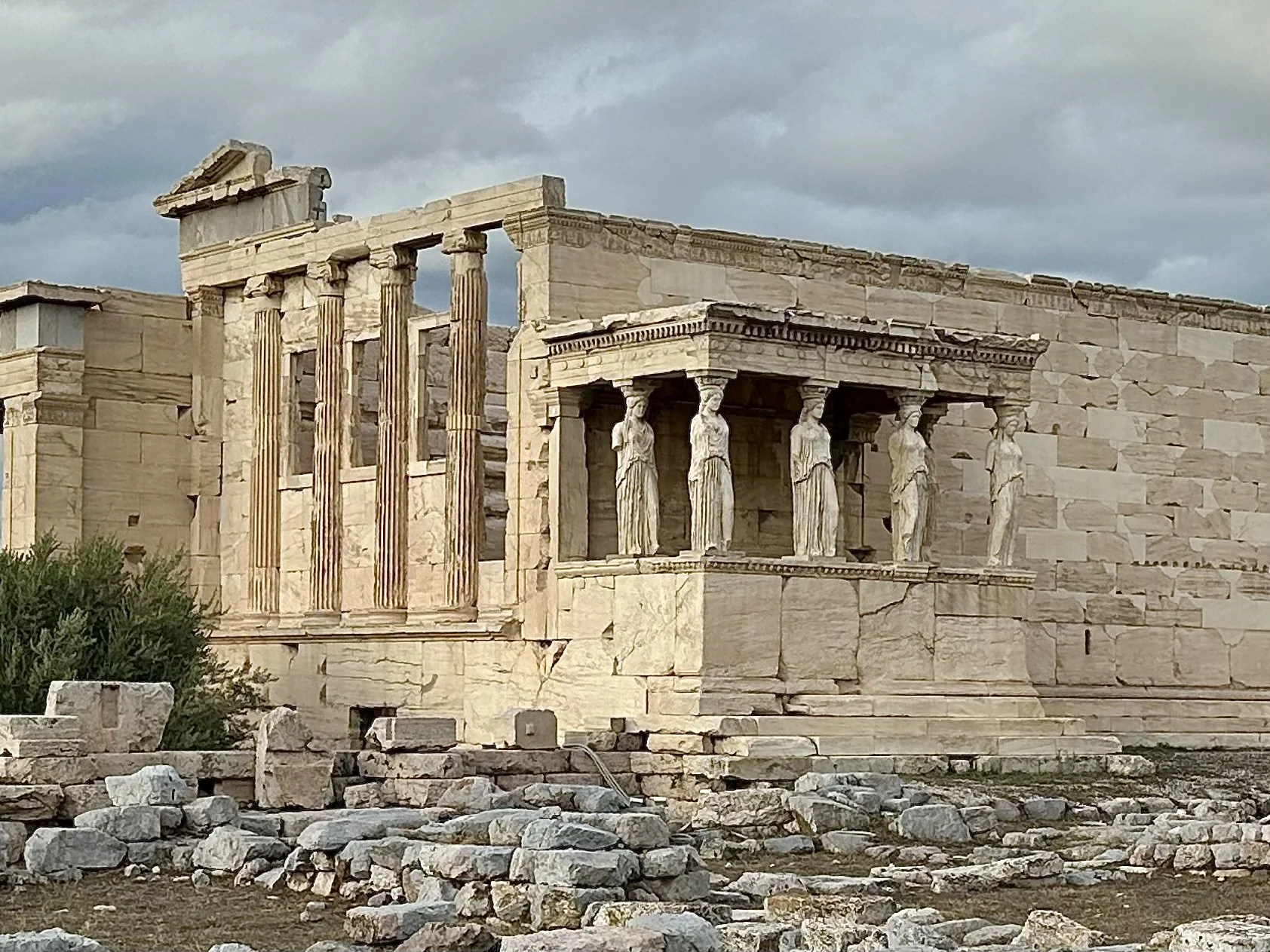

Across from the Erechtheion was the star of the show: the Parthenon! As we approached, there was a break in the clouds, and the sun turned the Parthenon to gold. Giannis excitedly informed us that just last week, the scaffolding that had covered the Parthenon for decades had finally been removed. Like many present day Athenians, he had never known a Parthenon without scaffolding. Now the temple could shine in its full glory, as it had nearly 2,500 years ago.
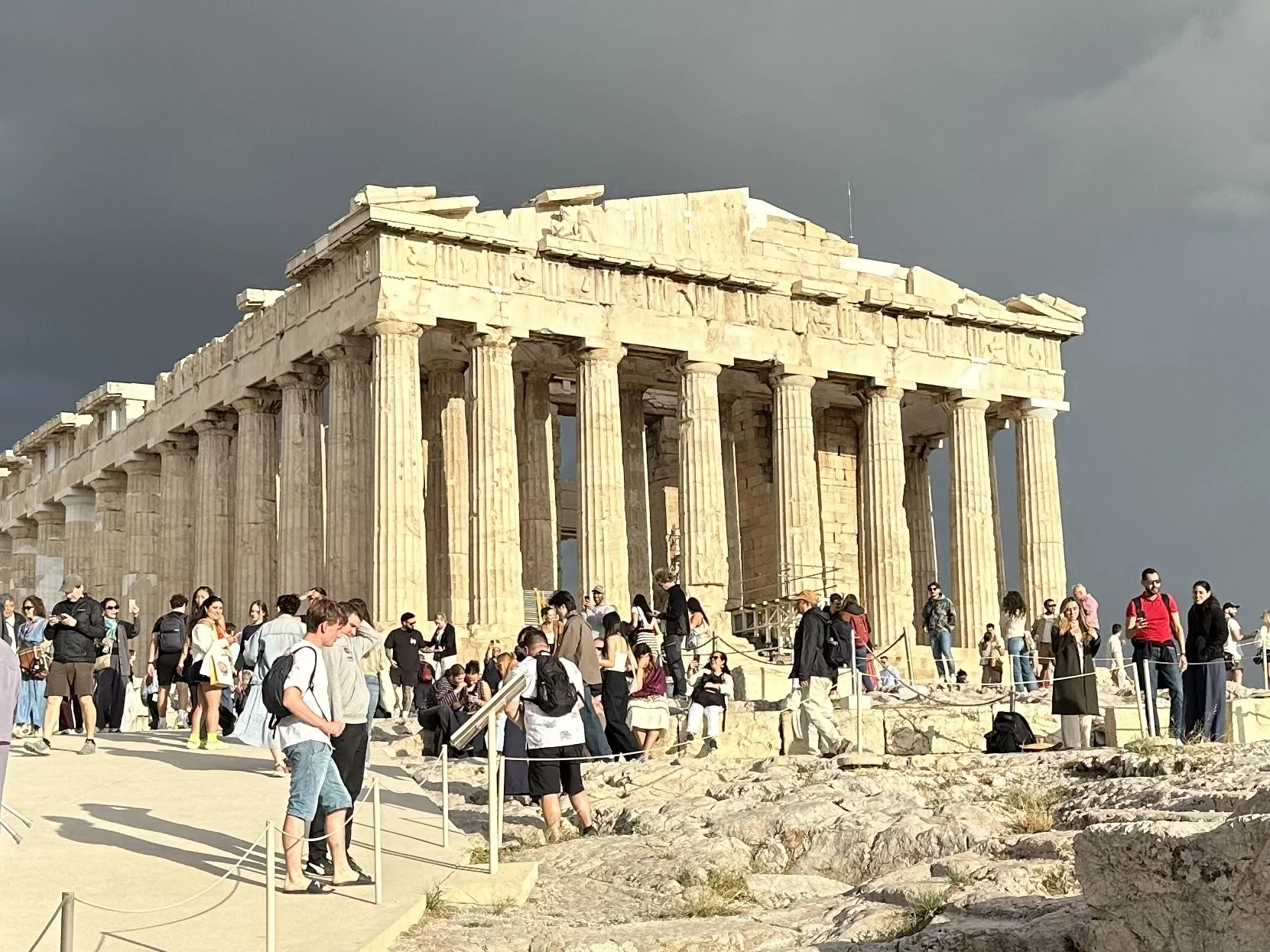
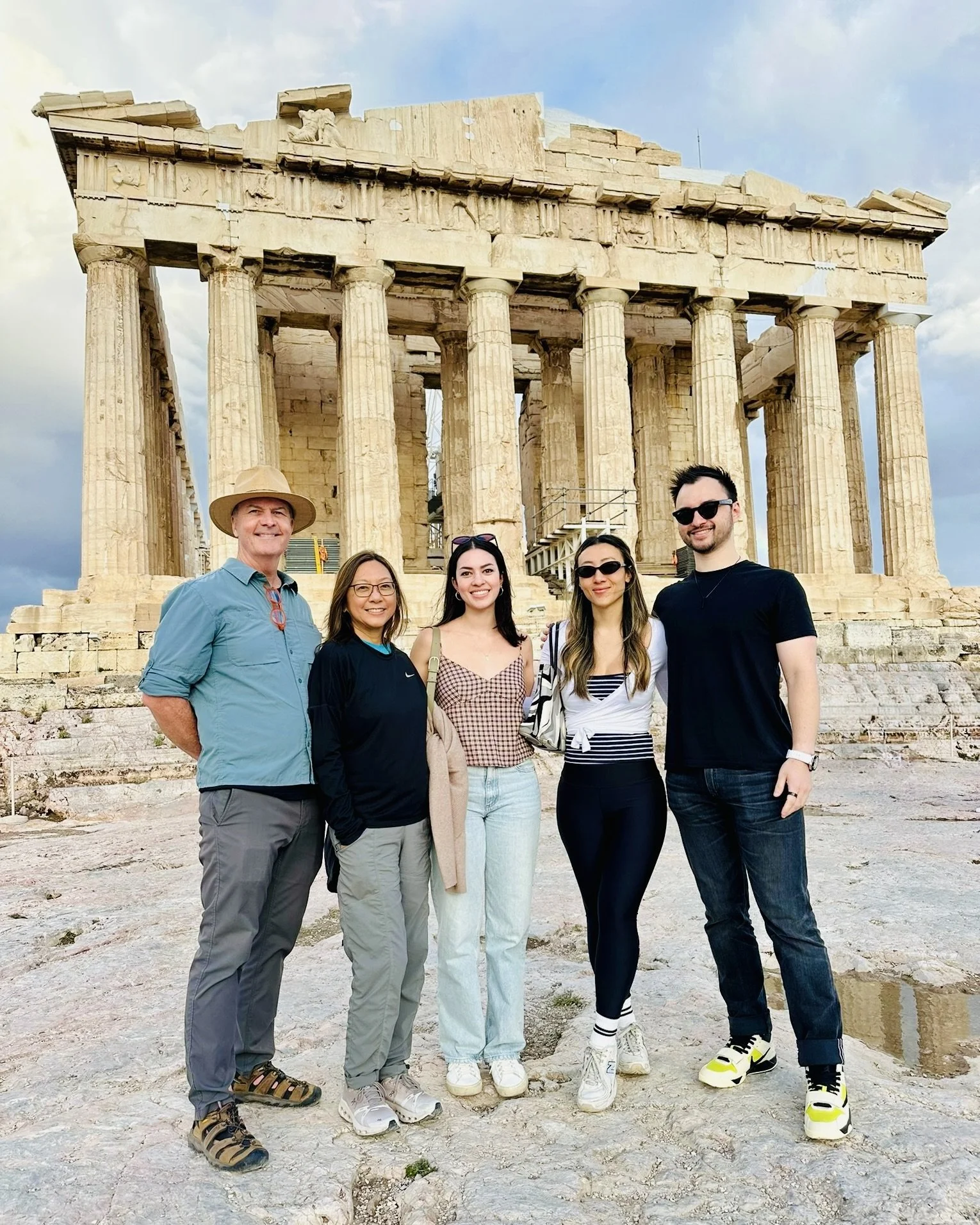
Some columns had areas of lighter-colored marble. These columns had been disassembled and painstakingly reassembled, using carefully carved pieces of new marble from the same ancient quarry.
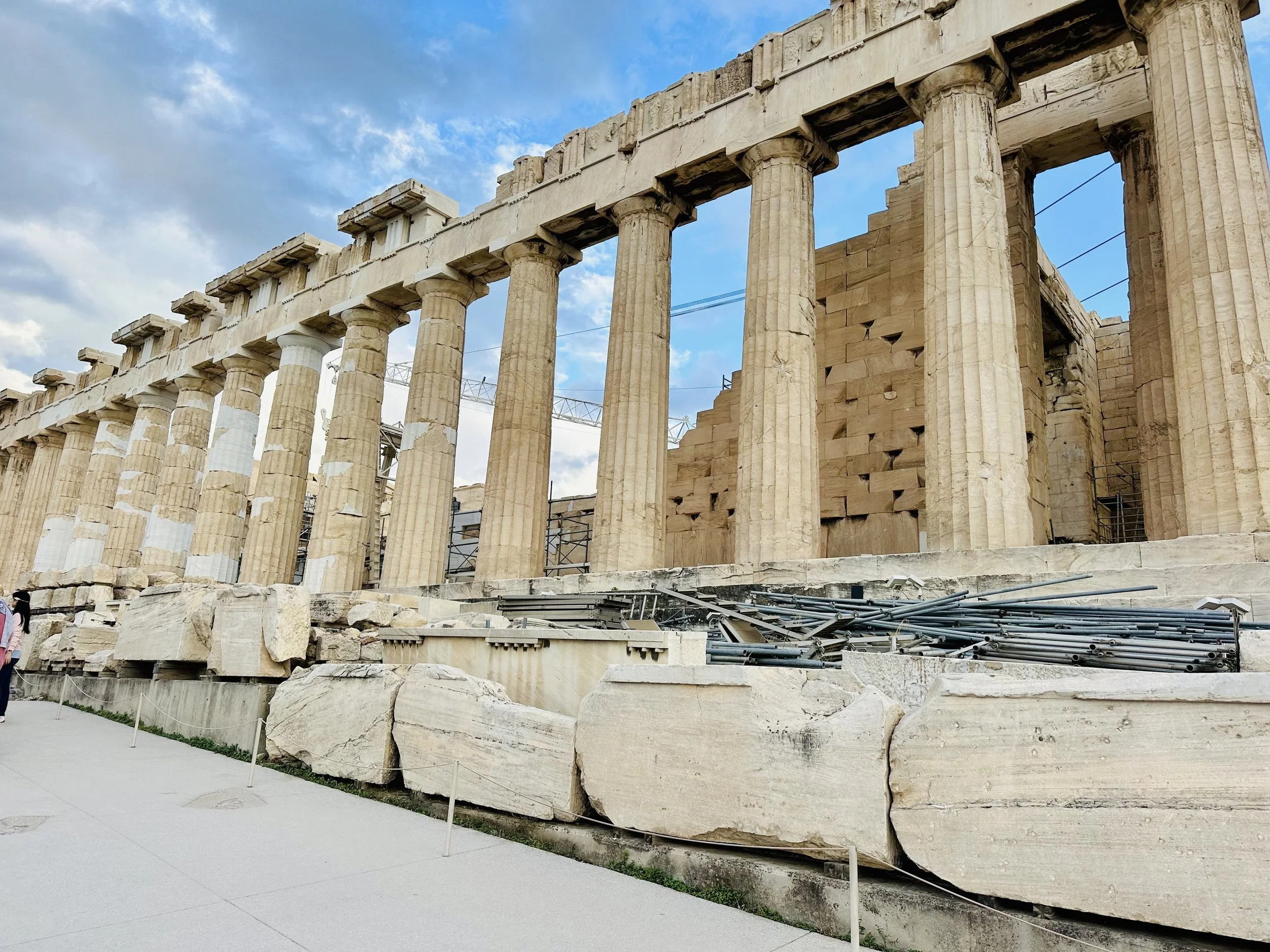
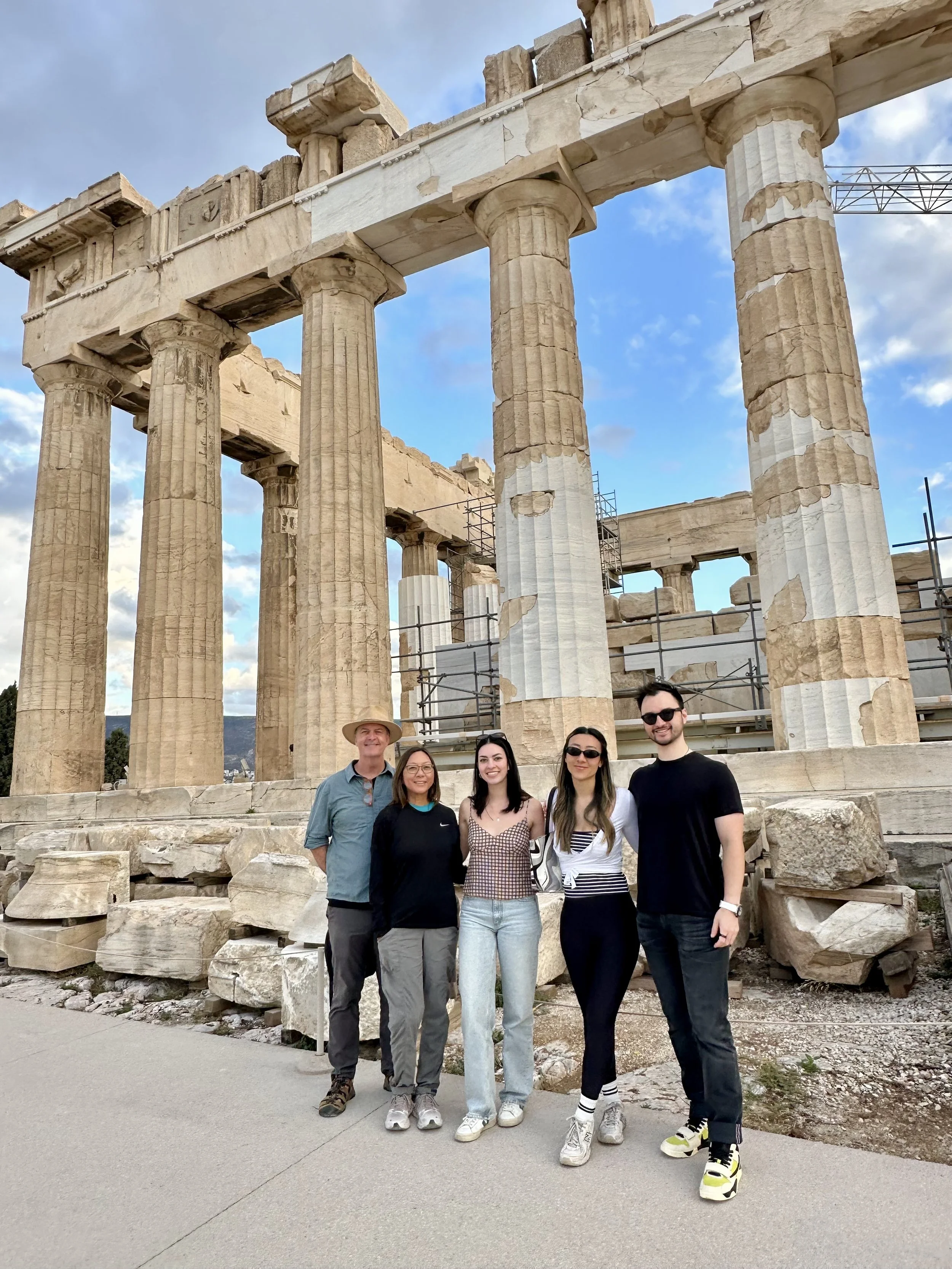
I would have been happy to gaze in wonder at the Parthenon for another hour, but It was almost closing time, and staff were shooing visitors toward the exits. We reluctantly walked back toward the Propylaea, marveling at the sun’s golden beams breaking through the clouds and lighting up the gulf. Gorgeous!
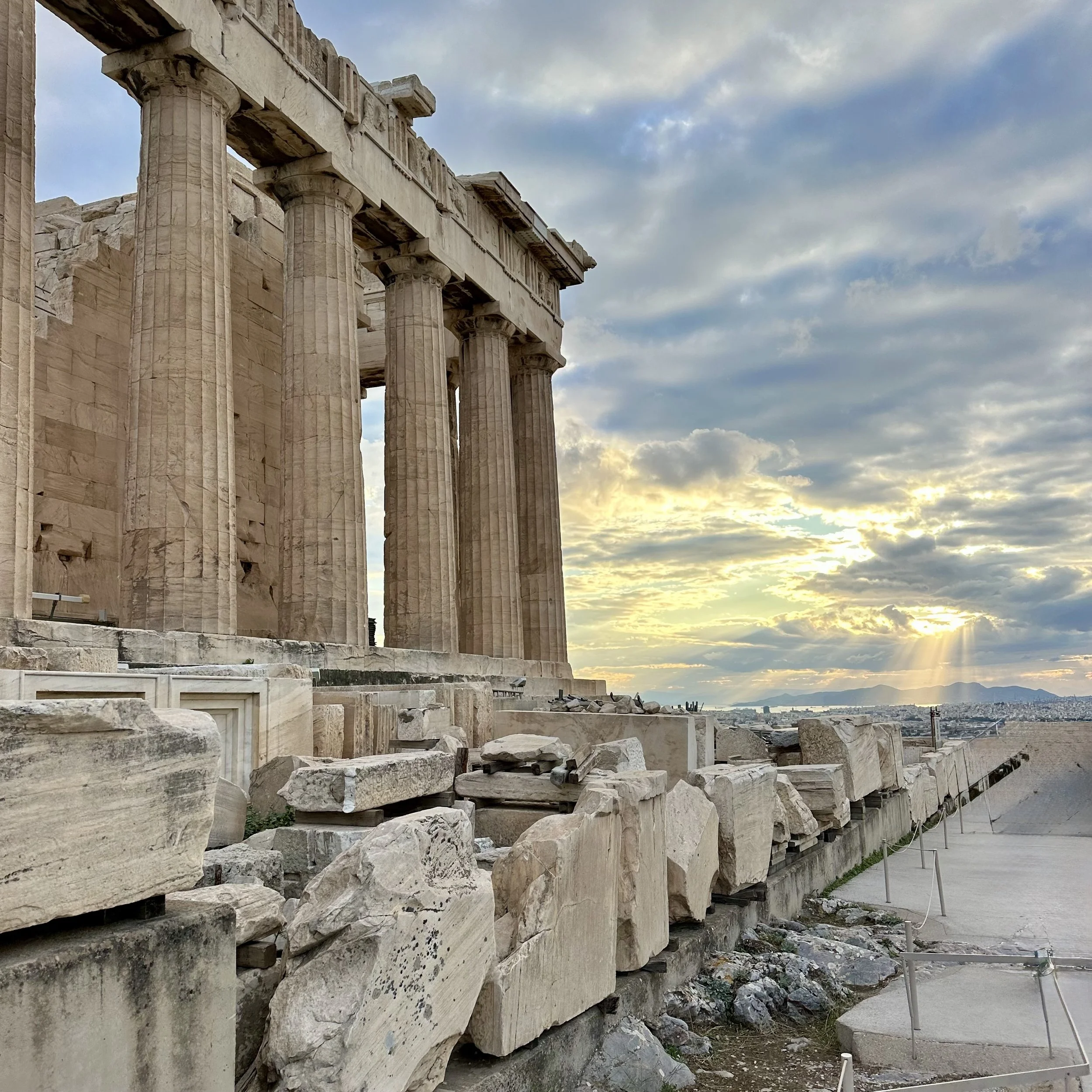
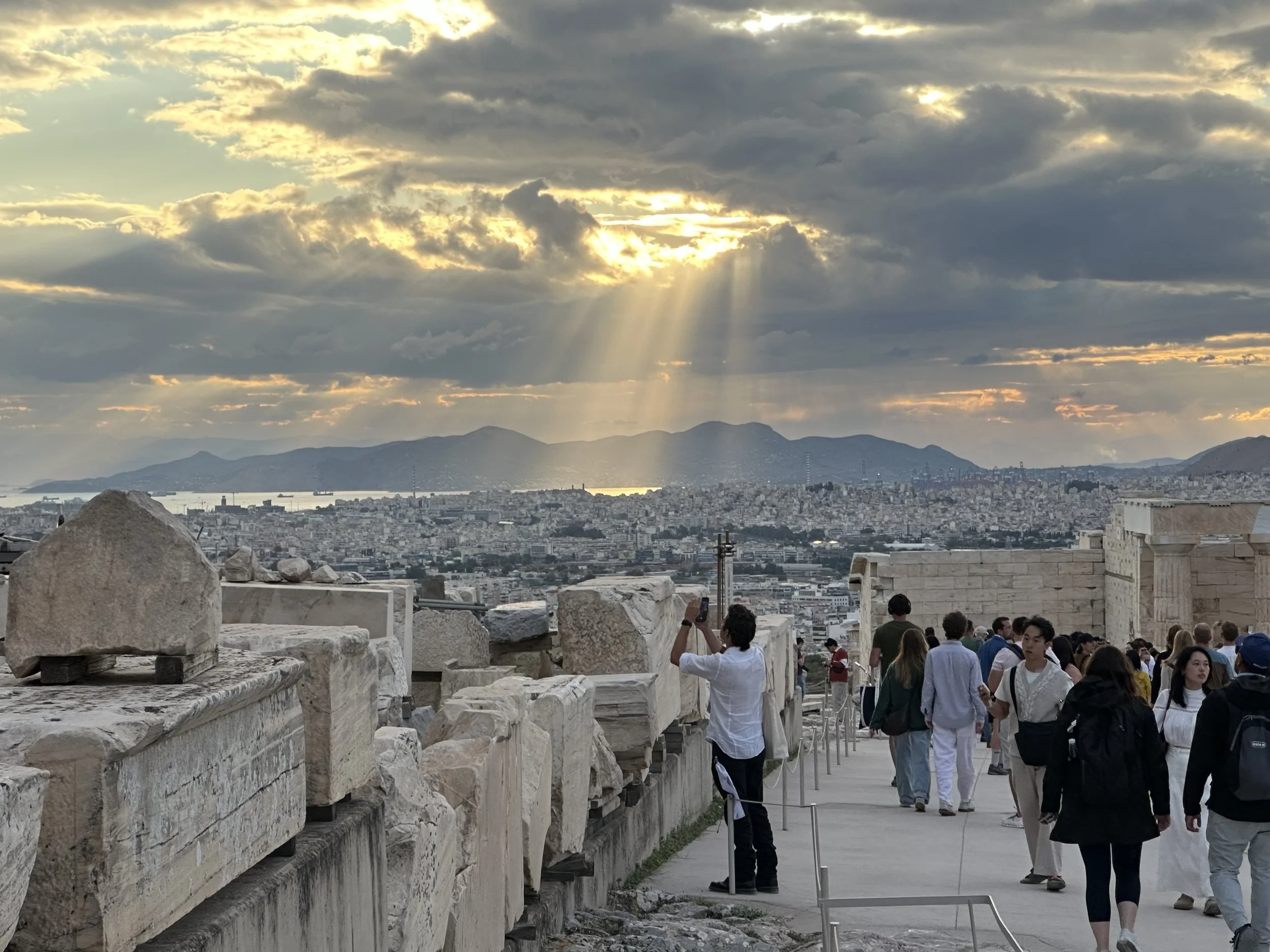
Suddenly a troop of uniformed soldiers marched by. It was probably the Presidential Guard, preparing to lower the Greek flag that flies over the Acropolis.
Steve snapped one last selfie in front of the scaffold-free Parthenon before we walked back down. We felt fortunate to have seen it like this. Cloudy skies could not dim this iconic symbol of civilization, art, and democracy.
Fun Facts about the Parthenon
It was a temple to the goddess Athena (the Greek word “parthenon” means virgin).
A 40-foot gold and ivory statue of Athena stood inside the temple; the public could see it, but could not enter.
It was the largest temple the Greeks had ever built, yet was completed in just nine years (447-438 BCE). Remarkable!
The building and its decorations were originally painted in many bright colors.
There are no straight lines in the Parthenon! The base, columns and entablature are slightly curved. This cunning “counter-perspective” tricks the eye into seeing perfectly straight lines. Many believe it makes the structure look more alive.
The Parthenon was built with remarkable speed, but the current restoration and preservation project has been underway since 1975 - that’s fifty years, and still counting.
